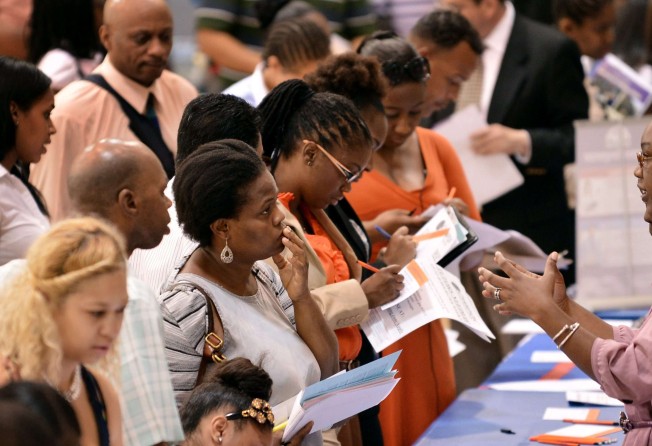The much-anticipated US non-farm payrolls is little more than a deliberately falsified indicator
On every hand there is growing evidence of a significant economic slowdown, except in the one indicator on which the Fed heavily relies

Objective observers might wonder why all this job creation in the US is not being reflected in a booming tax take at state level. Surely not every US taxpayer is as adept as Donald Trump in managing their tax affairs.
- Neal Kimberley, Macroscope, October 12
It is indeed a puzzle. The month to month change in US non-farm payrolls is the economic indicator that the US Federal Reserve Board watches above all others when deliberating whether to raise interest rates.
And as the Fed goes, so goes much of the rest of the world. Prices on our own property market are now rising because the latest Fed decision was not to raise rates.
The latest payroll numbers last week showed a seasonally adjusted (and then re-adjusted) 156,000 new jobs in September over August. This was slightly less than supposedly expected, but still robust.
Why then are most other indicators of US economic performance turning down? Why in particular should income tax revenues decline if this tax is deducted from payrolls and payroll numbers are up?
There is a tantalising clue in an Employment Situation Technical Note on the website of the US Bureau of Labor Statistics. Here is the essential bit in the original demographic jargon:
“Another major source of non-sampling error … is the inability to capture, on a timely basis, employment generated by new firms. To correct for this systematic underestimation of employment growth, [our] estimation procedure … excludes employment losses from business deaths … in order to offset the missing employment gains from business births.
“This is incorporated … by simply not reflecting sample units going out of business, but imputing to them the same employment trend as the other firms in the sample.”
I’m sure there is indeed a problem here. The US is a big country and how are statistical clerks in Washington to know of every new business that has started up in Wyoming? No circular is regularly sent to 325 million people saying, “Remember, if you start a business you must tell this bureau all about it.”
The tax collectors may know but, contrary to other appearances, there are still some privacy laws in the US and the Bureau of Labor Statistics cannot just casually dip into tax records. It works by sampling and if it has not heard of a new business it cannot include that business in its samples.
To make up for this, it records jobs that it knows have vanished as still existing. This falsehood, it assumes, counterbalances new jobs of which it has not heard.
It then further assumes everything will come right again later as it stumbles across these new jobs and can eliminate the old ones.
On most occasions if the economy is just plodding along at a steady pace, this may be a reasonable assumption. But there are two scenarios in which it is not.
The first is where the economy is at the early stage of recovery from recession. In this situation few jobs are disappearing but many new ones are being created. The payroll numbers will then for a time significantly understate the increase in employment.
The second scenario is where the economy is in the early stage of entering a recession. In this situation many jobs are disappearing but few new ones are being created. The payroll numbers will then significantly overstate employment.
And this is the situation in which the US finds itself at the moment. On every hand there is growing evidence of a significant economic slowdown except in the one indicator on which the Fed heavily relies.
The reason is that this indicator has been manipulated for statistical balancing purposes. It counts growing numbers of dead jobs as live ones in the hope that equal numbers of new live jobs are being created, when other circumstances say they are almost certainly not.
There is the answer to your puzzle, Neal, and it is really no puzzle at all. The Fed, and by extension the rest of the world, has its eyes on a deliberately falsified indicator. The coming months will show that its crystal ball is not just opaque, but cracked.
And some people still expect another Fed interest rate increase?